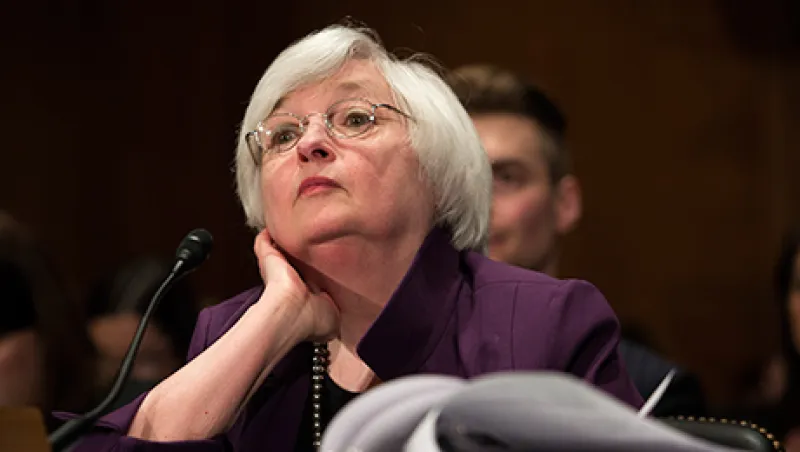The spread of investment-grade corporate bond yields over Treasuries has jumped to a two-year high this past week — and the Federal Reserve is largely to blame.
With Fed officials signaling they will raise interest rates as early as this month, many investors have been scared away from bond purchases. And corporations want to lock in the lowest possible borrowing costs before the Fed makes any moves. Issuance has soared over the past three years, pushing up bond supply as companies take advantage of low rates to finance merger and acquisition activity, share buybacks and dividend increases.
“Interest rates have been so low, that companies are borrowing money almost for the sake of borrowing,” says Michael Collins, co-manager of the Prudential Total Return Bond Fund in Newark, New Jersey. “Issuance has been unrelenting.”
So far this year, investment-grade companies have offered $556.9 billion of bonds, a record for the eight-month period, according to financial data provider Dealogic. The market’s total supply hit an all-time high of $1.1 trillion last year, according to research from Bank of America Merrill Lynch. This has helped push the spread of investment-grade corporates over Treasuries to 169 basis points. That’s up from a seven-year low of just under 100 basis points in June 2014.
About half of this widening has occurred since April, as focus has intensified on the looming Fed rate hike. “That has companies thinking it’s better to issue bonds now, when we know the market is strong,” says Hans Mikkelsen, head of high-grade credit strategy at Bank of America Merrill Lynch in New York. Investor trepidation over any possible Fed moves is evidenced by the recent outflow of cash from investment-grade corporate bond mutual funds and exchange-traded funds. Those funds suffered an outflow of $1.65 billion in the week ended August 26, according to Bank of America Merrill Lynch. With supply rising and demand waning, it’s no big surprise that spreads are widening.
As for share buybacks, they’re on pace to total $1.2 trillion this year. Mergers and acquisitions have totaled $1.54 trillion so far this year, according to Dealogic. Many of both types of deals are financed by bonds. Mikkelsen says the widening spread will make companies think twice about issuing new debt, however. “If you’re doing M&A, it will be much more expensive to finance it with debt, so there will be a shift toward more equity,” he maintains. “For companies issuing bonds to buy back shares, that becomes much less favorable.”
Others are not so sure issuance will tail off, though. “Corporate treasurers are more concerned with the absolute levels of yields than the spread,” says Ashwin Bulchandani, chief risk officer at MatlinPatterson, a $7 billion alternative asset management firm in New York. The Bank of America Merrill Lynch corporate bond index still yields only 3.48 percent.
“That’s extraordinarily low on a historical basis,” notes Dan Botoff, head of U.S. investment-grade syndicate at RBC Capital Markets in New York. “There’s still an opportunity for borrowers to use the bond market to raise a fair amount of capital.” Prudential’s Collins agrees. “This [spread widening] is a nonevent for companies,” he says. “It feels like the heavy issuance will continue.”
The widening spread likely means a shift of demand from mutual funds and ETFs, which are highly focused on returns, to pension funds, insurance funds and sovereign wealth funds, which tend to be more concerned about yield. “A good portion of the market is yield investors, not spread investors,” Botoff says. That turnover in investors is actually good for the market in the long term, because the focus moves toward fundamentals, rather than chasing return, says Mikkelsen.
Collins has purchased some investment-grade corporate bonds in his fund. “The big position is to be overweight financials and underweight industrials,” he says. That’s because industrial companies are releveraging their balance sheets, whereas banks can’t because of stricter regulation following the financial crisis. Collins is also underweight commodities companies, as commodity indexes have dropped to 13-year lows.
Sentiment is mixed as to whether the spread will widen further. MatlinPatterson’s Bulchandani says that as long as there is uncertainty about when the Fed will begin to raise rates, investors will be reluctant to take risk, pushing the spread a bit higher. Collins believes, however, that the spread already reflects the risk of Fed tightening and that it may already have hit its high for the next few years. “We’re positioned for that,” he says. “A lot of value has been created.”
Get more on fixed income.







